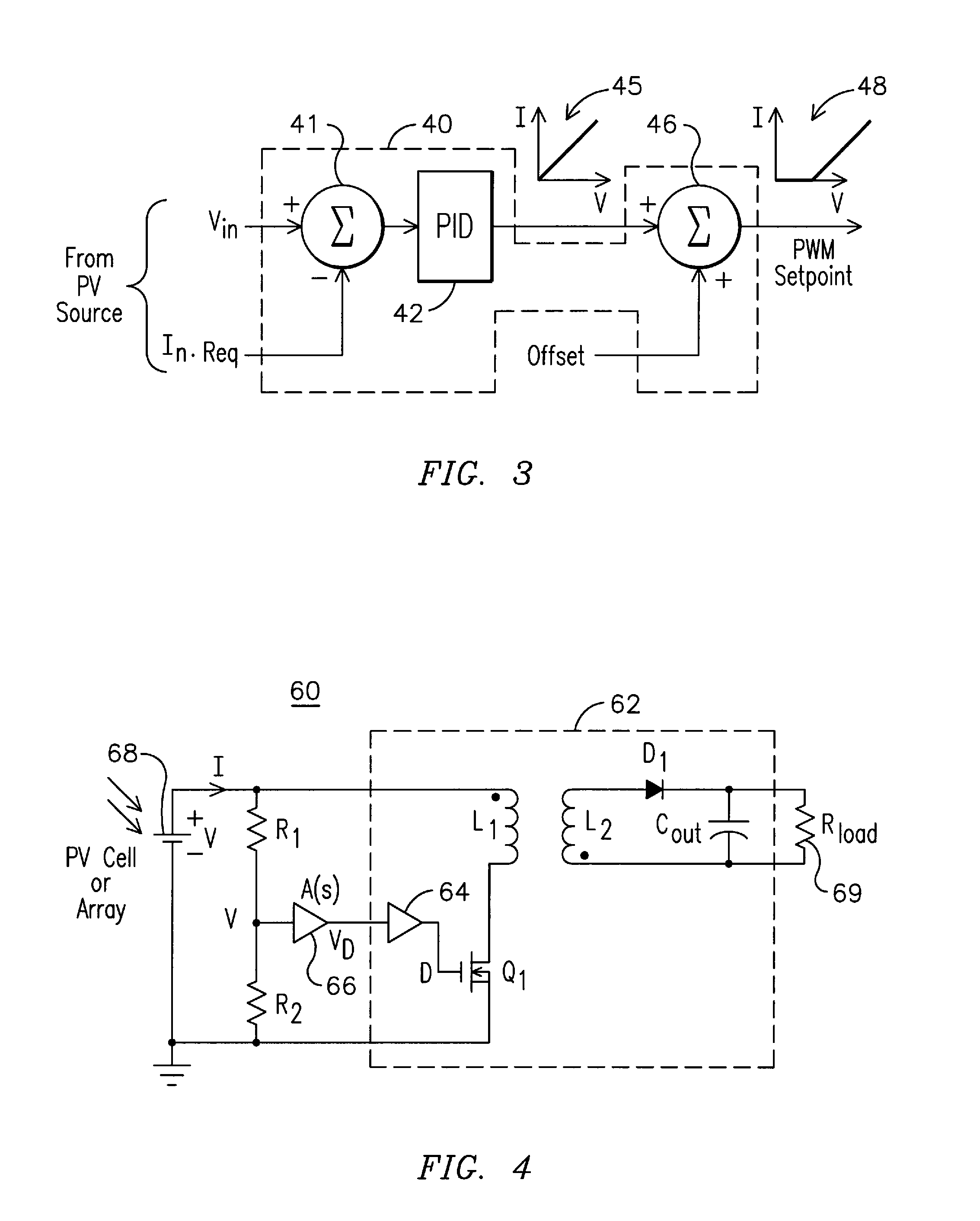System, method, and apparatus for extracting power from a photovoltaic source of electrical energy
a photovoltaic and electrical energy technology, applied in the direction of batteries, process and machine control, instruments, etc., can solve the problems of reducing the harvesting efficiency of the pv system, and generally much more complex maximum power tracking techniques
- Summary
- Abstract
- Description
- Claims
- Application Information
AI Technical Summary
Benefits of technology
Problems solved by technology
Method used
Image
Examples
Embodiment Construction
[0017]The inventors of the present invention propose an innovative photovoltaic (PV) system and / or methodology that may be advantageously used to extract, under a wide variety of operational and / or environmental conditions, maximum or near-maximum electrical power from a source of electrical energy, such as photovoltaic (PV) power source, as may be made up of a single photovoltaic cell or a photovoltaic module in the case of a battery of cells. Advantageous aspects of the present invention eliminate the need of having to utilize maximum power tracking circuitry and control for such circuitry, and thus avoid issues concomitant with maximum power tracking circuitry or control. For example, aspects of the present invention avoid having to utilize processing means for implementing a maximum power tracking algorithm and lead to incremental savings of electrical power since one does not have to electrically power such processing means. Moreover, aspects of the present invention lead to in...
PUM
 Login to View More
Login to View More Abstract
Description
Claims
Application Information
 Login to View More
Login to View More - R&D
- Intellectual Property
- Life Sciences
- Materials
- Tech Scout
- Unparalleled Data Quality
- Higher Quality Content
- 60% Fewer Hallucinations
Browse by: Latest US Patents, China's latest patents, Technical Efficacy Thesaurus, Application Domain, Technology Topic, Popular Technical Reports.
© 2025 PatSnap. All rights reserved.Legal|Privacy policy|Modern Slavery Act Transparency Statement|Sitemap|About US| Contact US: help@patsnap.com



